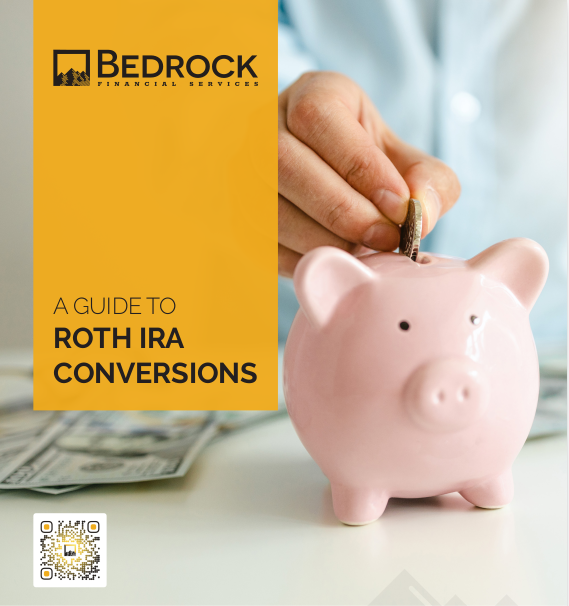Key Takeaways
-
If you want clients to actually care about insurance products, you have to frame them in the context of their real-life risks, decisions, and goals—not the product specs.
-
Your role as a financial professional isn’t to explain features; it’s to translate how a product affects someone’s future, security, and options.
Start With What Keeps Them Up at Night
Before diving into deductibles, riders, or term lengths, ask yourself: what real-world problem does this product solve? Most clients don’t think in product categories. They think in pain points:
-
“What happens to my kids if I’m gone tomorrow?”
-
“How do I avoid becoming a financial burden when I’m older?”
-
“If my spouse gets sick, how do we cover care without burning through savings?”
You’re not selling a policy. You’re helping someone protect their most fragile hopes. Frame every explanation in terms of that reality.
Connect With Urgency Without Fear-Mongering
This doesn’t mean using scare tactics. Instead, focus on timelines:
-
Long-term care planning often needs to start in your 50s—not your 70s.
-
Disability income protection is most critical during your peak earning years.
-
Life insurance is cheapest and most effective when you’re young and healthy.
Deadlines, not fear, create clarity. Educate clients on windows of opportunity and what’s at risk if they wait.
Translate Features Into Outcomes
You know the difference between a guaranteed universal life policy and a variable one. Your client doesn’t need to. What they need is this:
-
“This option locks in predictable premiums for life.”
-
“This one could grow your cash value faster, but it comes with more market risk.”
Stop leading with product architecture. Instead, map out how each feature plays out in the client’s world:
-
Stability or flexibility?
-
Access to cash or maximum legacy?
-
Premium now or payment later?
Use Plain Language That Respects Intelligence
Clients are capable, but they aren’t insiders. Using jargon creates distance. Instead of “riders,” say “optional add-ons.” Instead of “elimination period,” say “how long you’d wait before benefits begin.”
That said, never dumb it down. Teach up. Clarify terminology when needed, but always circle back to why it matters.
Make Education Interactive, Not Passive
Telling isn’t teaching. You need tools, visuals, and conversation to make information stick.
Use Frameworks Over Scripts
Instead of memorizing how to pitch each product, build flexible frameworks that fit your client:
-
“Let’s walk through three main types of risk you might face. Then we’ll look at options to reduce them.”
-
“We’ll review how each product helps in a health emergency, death, or long-term care situation.”
Your delivery should feel like a guided conversation, not a lecture.
Give Them Control With Comparisons
Education accelerates when people feel empowered. Offer side-by-side comparisons with tradeoffs, not just winners and losers. Let them weigh:
-
Monthly cost vs. payout value
-
Liquidity vs. long-term growth
-
Simplicity vs. customization
Let the client ask, “What happens if…” and walk through the answer together. That’s the most effective kind of learning.
Lean Into Timing and Life Stage Relevance
An insurance product means very different things to a 30-year-old than it does to someone turning 60. Don’t just teach the product; teach its timing.
In Your 30s
-
Start with low-cost foundational protection (life, disability).
-
Educate on how products can lock in lower costs early.
-
Introduce the concept of building insurability before health declines.
In Your 40s to 50s
-
Focus on protection for family, income, and health risks.
-
Begin serious conversations around long-term care needs.
-
Show how product layering can optimize protection and wealth.
In Your 60s and Beyond
-
Emphasize asset protection, legacy planning, and care funding.
-
Review and revise coverage to reflect reduced liabilities.
-
Help make strategic decisions around downsizing or conversion.
Each decade brings a new question of “What do I need now?” Product education that doesn’t align with those shifts will always feel irrelevant.
Stop Assuming Interest—Earn It
Most clients don’t wake up wanting to learn about insurance. That’s your challenge: how do you earn their attention?
Start With a Visual Gap
Use an image, chart, or calculator that shows the gap between where they are now and what they’d need in a crisis. A visual like this makes the problem real before you mention a solution.
Show Real-Life Outcomes
Paint a clear picture of outcomes:
-
“With this setup, you’d have $X income replacement if you couldn’t work.”
-
“This plan would cover 70% of long-term care costs based on today’s pricing.”
Concrete outcomes break the abstraction barrier.
Repetition Without Redundancy
Reinforcing product education doesn’t mean repeating the same facts. It means layering the information across touchpoints:
-
A visual summary in the first meeting
-
A short follow-up video walkthrough
-
A recap email with FAQs and client-specific illustrations
Your goal is for them to recognize and retain the key information. Repetition across formats (not just conversations) ensures retention.
Use Technology to Make Education Scalable
You can’t afford to walk every client through every detail, every time. That’s where smart use of tech helps you scale without losing depth.
Leverage Video Walkthroughs
Short videos that explain product basics, frequently asked questions, and policy structures can:
-
Reinforce your in-person message
-
Give clients something to review on their own time
-
Reduce repetitive questions in follow-ups
Build a Resource Hub
Consider creating or contributing to a resource hub with:
-
Product explainers by client life stage
-
Glossaries of terms
-
Scenario calculators or needs analyzers
This puts education in their hands without replacing your value.
Reframe Education as Empowerment, Not Compliance
Don’t treat insurance product education like a box to check or a pitch to memorize. Treat it like a key moment of client empowerment.
They’re not buying coverage. They’re gaining:
-
Control over future options
-
Peace of mind for unpredictable events
-
Confidence in the plan you build together
When education is meaningful, clients don’t feel like they’re being sold. They feel like they’re being prepared.
Elevating Your Role in the Process
Insurance product education is where your expertise becomes visible. Not in the form of technical mastery, but in translation:
-
You turn insurance from a checkbox into a strategic choice.
-
You bring meaning to what feels like fine print.
-
You connect policies to priorities.
This is the moment where your role stops being about compliance and starts becoming about clarity. Done well, it builds long-term trust.
Bring Insurance Conversations to Life With the Right Support
If you’re ready to stop sounding like a brochure and start having real conversations that convert, we can help. At Bedrock Financial Services, we equip financial professionals with the tools, automation, and content needed to transform product education into relationship-building.
From client-facing assets to backend automation and CRM tools, our resources are built to help you do more of what works—and less of what wastes your time.
Sign up with Bedrock today to see how we help professionals like you build a business on clarity, not confusion.







